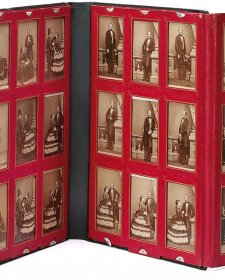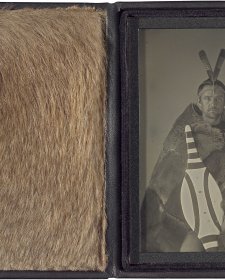- About us
- Support the Gallery
- Venue hire
- Publications
- Research library
- Organisation chart
- Employment
- Contact us
- Make a booking
- Onsite programs
- Online programs
- School visit information
- Learning resources
- Little Darlings
- Professional learning
This carte de visite is part of a suite of photographs taken in London in 1860. In May that year, it was reported in The Times that English photographer John Jabez Edwin Mayall had been ‘honoured by The Queen’s commands to attend at Buckingham Palace’, where he created ‘a series of highly successful portraits of Her Majesty, his Royal Highness the Prince Consort’ and several of their nine children. Though hardly the first photographs taken of the royal family, Mayall’s portraits represented a seismic departure from convention in two key respects: firstly, that Queen Victoria had chosen to be documented in the humble, democratic form of the carte de visite; and secondly, even more radically, that she had consented to the photos being printed in large numbers and made available to her subjects. Issued as a set titled ‘The Royal Album’, sales of the photographs are said to have netted Mayall some £35,000 and started a craze for collecting cartes de visite in the English-speaking world.
Queen Victoria (1819–1901) was monarch for 63 years and seven months, her reign corresponding with the advent and progress of photography. An enthusiastic collector of cartes-de-visite herself, she is often described as the world’s first media monarch for having so successfully harnessed photography to disseminate and control her public image.
Purchased 2020



On one level The Companion talks about the most famous and frontline Australians, but on another it tells us about ourselves.



Joanna Gilmour discusses the role of the carte de visite in portraiture’s democratisation, and its harnessing by Victoria, the world’s first media monarch.



This sample of 56 photographs takes in some of the smallest photographs we own and some of the largest, some of the earliest and some of the most recent, as well as multiple photographic processes from daguerreotypes to digital media.